A PhD thesis is a theoretical report of your research work in the form of writing-draft divided into different dedicated chapters (aim-introduction-review of literature- methodology and results).
Everything should be perfect in PhD, you know its a higher level of academic award and so the PhD thesis is!
Writing a PhD thesis is indeed not rocket science as everybody thinks so, a little English knowledge, so much reading and consistency in writing help you to complete your thesis on time.
Nonetheless, your thesis must be attractive, it represents your hard work, knowledge and expertise and works you done during your PhD tenure, thus it must be written perfectly right!
But no one is perfect in the world, and so not you too. That is the reason you have allotted a PhD guide who can improve your work by their experience and expertise.
The PhD degree is a topmost academic honour given to the candidate in his or her related field in which a candidate postulates hypothesis or theory and invents new knowledge in their field.
In a simple language, we can say, a PhD candidate provides knowledge in their respective field.
A PhD thesis reflects what you discovered in your PhD hence it must be perfect.
Although the elements of thesis writing vary from universities to universities, some are the same such as- introduction, review of literature, material/method and results.
The entire draft of the PhD thesis can be divided broadly into three categories: Front matters, main body content and End matters.
We will start with the main body content and then after we will discuss of the front matter and end matter.
Main body content:
The main body content provides information about your research, methodology, your results and outcomes broadly divided into- introduction, Review of literature, methodology, results and discussion and interpretation.
Introduction of the thesis:
Your actual content of the thesis starts with the introduction part in which you have to incorporate basic information related to your topic.
The introduction generally states-
General information related to your topic, Purpose of investigation, the background of the problem, the importance of the problem being investigated and sufficient background information surrounding your research problem.
In addition to this, in the introduction part, explain why you are doing this work and its scope in future research.
Let’s understand the entire process by taking an example,
I had done my PhD on eunuch with the help of the two types of common genetic techniques cytogenetics and microarray.
In the introduction part, I had included information regarding a brief overview of what euchres are, definition, etymology, their social status, economic status, their prevalence in different parts of the world, their history and how they originated.
I had incorporated the information regarding their medical and or genetic status as well.
In the last segment of my introduction chapter, I had given information related to the problem of being investigated by me and why it is needed.
Note: Start writing with the hook statement that defines your research work in a few lines, this can create curiosity for the reader.
Structure of introduction:
- State what your topic is and it’s important
- Include general information
- Explain what the problem is
- Postulate the way you conclude it
- Clarify your aims and objectives
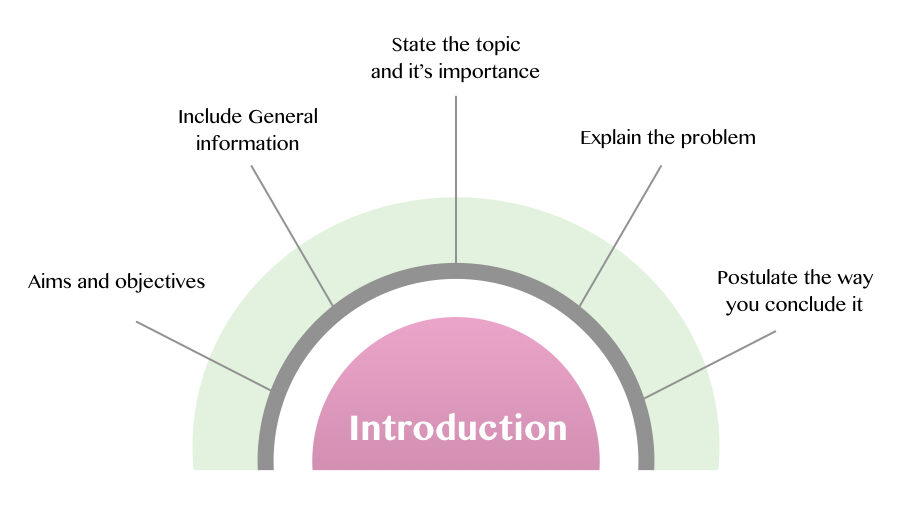
Review of literature:
The review of literature is the heart of any PhD thesis, the major focus of the review writing’s on the current scenario of our research topic- what research are other scientists doing on your topic.
Candidate has to investigate other literature, a problem associated with the topic and how it is solved.
besides, comparative analysis of the different methodology used to solve the problem can also be explained in the review of literature chapter.
I had reviewed more than 300 different literature related to eunuchs, I had listed different genetic conditions associated with it and how scientists had reported those conditions using different techniques.
In the end, I had prepared a comparative analysis of several technologies used for the evaluation of different genetic conditions associated with eunuchs with the advantages and disadvantages associated with it.
Structure of the literature review:
- Summarise other findings in your field.
- Identify and indicates the gaps, problems and shortcomings in it and correlated it with your objectives.
- Discuss the methodology as well as enlist other literature related to it.
- Answer how your technique or methodology is suitable for the study.
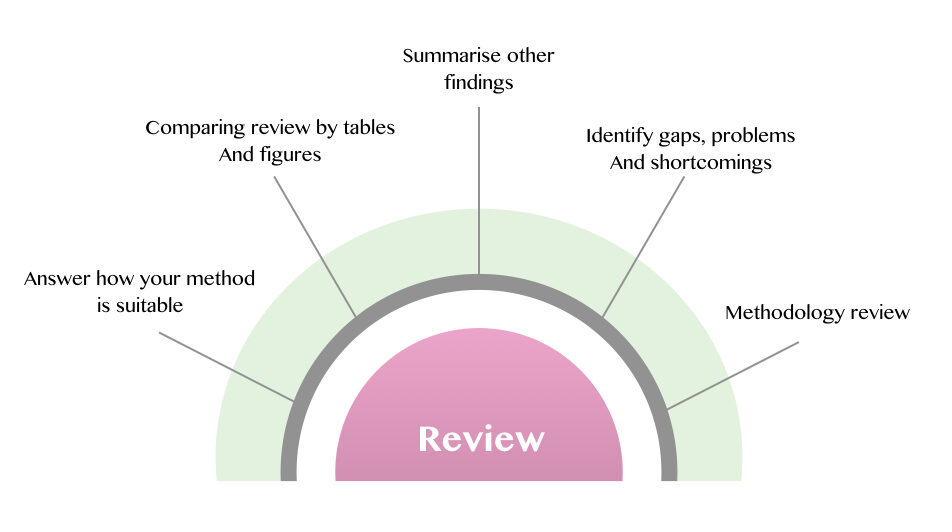
Methodology:
Detailed information on the methodologies or a method used for evaluating the problem is explained in the methodology section.
Remember you are not preparing a report, each and every minute details regarding the topic must include in the thesis.
Information on the strategic use of the methodology, materials, apparatus, procedures and chemicals are included here. Flowcharts and figures are used to describe the methodology preciously.
I had selected karyotyping and DNA microarray for solving my PhD problem. I had enlisted all the chemicals, glassware and plasticware used during the research. I had also included a procedure for different reagent preparation along with the information of how I had used both the procedure to solve the problem.
What should be considered in methodology;
Information regarding requirements to overcome the problem- such as chemicals, solvents, glassware, plastic wares, instruments and other utilities.
Deep illustration of the technique, method, procedure, protocol and theory used to evaluate the problem.
Statistical procedures, software and assumptions used during the research if any.
Structure of methodology
- Enlist and explain the methodology used to answer the research question.
- Explain why you selected the present technique and how it is relevant to study your objectives.
- Describe the protocol of your technique.
- If the technique is improved, explain why improvisation needs and also discuss the original method with citation.
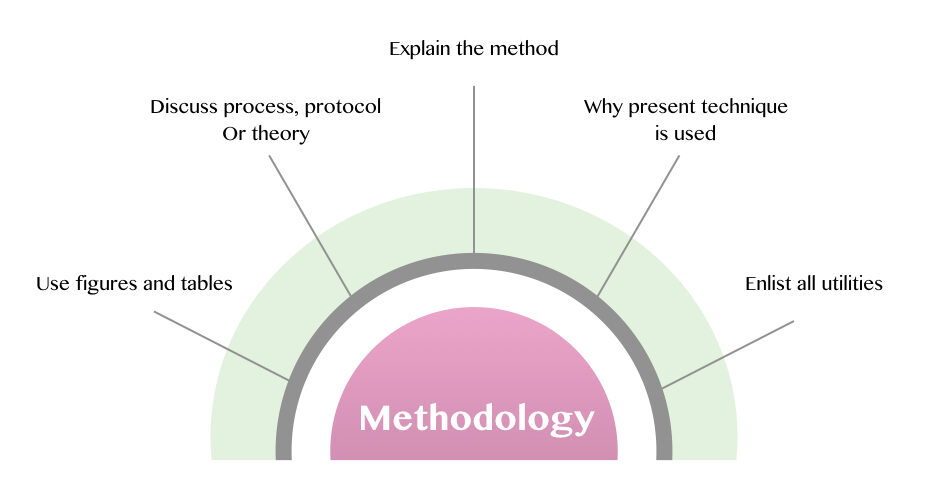
Result and discussion:
The outcomes or the observations of your entire research with discussing and comparing it with the related present research are stated in the result and discussion section
Remember do not interpret the results here only enlist the positive and negative observations obtained through the methodology.
Make the results more understandable using tables, charts, figures and other illustrations.
The results discussion section of the thesis is a key part of your work. Here in the discussion part candidate have to defend their independent work by arguing with other findings. Identifying loopholes and negatives in other’s findings and compare it with your work will support your findings. Also, it is very important to include summaries of related findings which supports yours.
Note: citation must require in the discussion portion. You can start with the name of the researcher or you can cite it at the end of the paragraph. For example,
Chauhan T et al., (2019) reported that the SRY gene may or may not present in the XX male instead other mechanisms might be involved in the development of sex reversal.
Or
Studies indicate that the SRY gene is not always present in XX male sex reversal, it is possible that other mechanisms lead to sex reversal ( Chauhan T et al., 2019).
You can also support their findings by summarising methodologies used by researchers as well. For example,
Chauhan T et al., (2019) used conventional cytogenetics and microarray technique for finding genetic abnormalities associated with eunuchs. Although none of the samples out of 50 have prominent cytological abnormalities such as numerical or major structural alterations, two samples had XX chromosomes instead of XY. Their microarray findings validated the results.
Interestingly, the outcomes of our empirics are correlated with them. A case of XX sex reversal was reported by us. Although instead of microarray, we had validated results using the polymerase chain reaction.
This is an example, likewise, you can compare accordance and discordance of your findings with recent findings.
Structure of results and discussion:
- Enlist results or findings using tables, graphs and figures
- Support your empirics using other literature
- Enlist the likely causes, mechanism and trends of your findings
- Check multiple hypotheses related to yours if any
- Discuss evidence in support with your findings
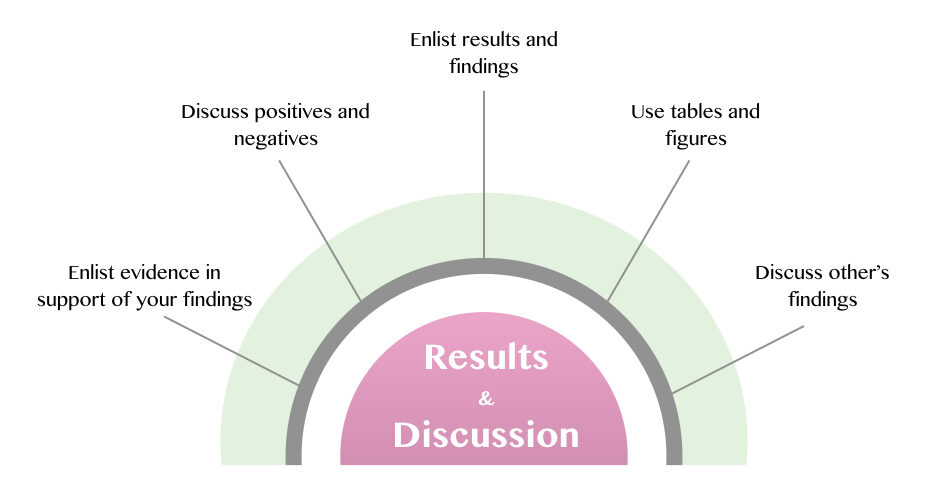
Conclusion:
Here in the conclusion, you have to answer your query, even if it is negative. Negative findings are also results. In this section summarise your findings and wrap it with the one-liner conclusion at last. The conclusion should be one or two pages long.
In the final conclusion, in a paragraph, you can also include how your finding helps the society or other researchers.
I had concluded like this,
Out of 50 samples, genetic abnormalities are found in only two samples. The rarest form of the genetic abnormalities sex reversal has found in during our study. A large number of samples and state of the art, high-end instrumentation such as next-generation DNA sequencing required to establish the genetic basis of the eunuch.
Structure of conclusion:
- One liner answer for your research question
- Correlate your findings with your objectives
- Enlist your outcomes and significance
- Suggest areas of improvement in the present research
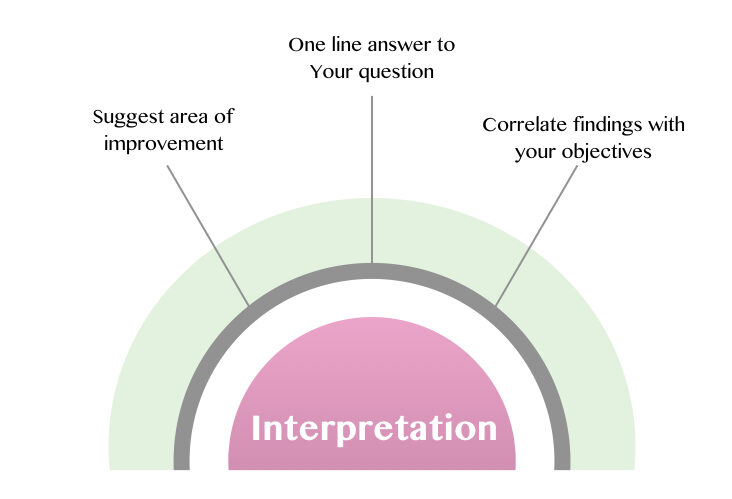
References or bibliography:
In the last chapter of your thesis, include all your references used in the thesis in a specific manner. Many different citations and reference formats are available; pick what recommended by your university and accordingly enlist the references.
Examples of some reference system:
AMA formate:
Markham AF. The polymerase chain reaction: a tool for molecular medicine. BMJ. 1993;306(6875):441–446.
MLA formate:
Markham, A F. “The polymerase chain reaction: a tool for molecular medicine.” BMJ (Clinical research ed.) vol. 306,6875 (1993): 441-6.
APA formate:
Markham A. F. (1993). The polymerase chain reaction: a tool for molecular medicine. BMJ (Clinical research ed.), 306(6875), 441–446.
NLM formate:
Markham AF. The polymerase chain reaction: a tool for molecular medicine. BMJ. 1993 Feb 13;306(6875):441-6.
Frontmatter:
The title page:
The title page should contain your title first, author, university name, department, the name of the PhD supervisor, date, address and email address.
Abstract:
Summary of your entire thesis or research topic should be summarised prior in the form of an abstract including a brief introduction, the problem, methodology in brief and your results and conclusion in a few lines. The abstract should be a maximum of 2 paragraphs containing 450 to 500 words.
The key element: the abstract is just an outline, citations are not needed in it.
Acknowledgement:
Acknowledge the people or co-workers associated with your research or help you during your research. It is a good practice to mention someone how he or she is important to you and your research.
It can be placed before the table of contents or after the table of contents. Some universities also allow it at the end of the thesis.
Table of content:
List all the heading, subheadings, chapter and other topics in the table of contents with page numbers.
List of figures:
List all the figures with title, page number and chapter.
List of tables:
List all the tables included in the thesis with page number, title and chapter.
Common abbreviations:
Enlist all the short forms or abbreviations used in the thesis with their full names. Generally, this section is mandatory for PhD in science.
End matter:
Funding information:
If your research is funded by any government, private or NGO, you should include this information here (not mandatory).
Appendices and annexures:
Provide information regarding the calculations, equations and other procedures employed during the findings in this section. You can separate it with labelling it with appendix A, B or C, instead of numbers.
End of the thesis:
Use the last page only to inform the end of the thesis. Do not include this page in any heading or subheading or countings.
PhD writing- common suggestions
Start writing:
The very first thing you should do is to start writing your thesis from the first day of your PhD. Read research papers and make notes. Labelled points and sentences to use it in different chapters. Make a rough draft of it and cite it properly so that in future you can navigate it.
Editing your thesis:
Compile your years work in different chapters and start reviewing and editing your rough draft of the thesis. See other’s good thesis (do not copy it) and try to write in that manner. Edit your thesis quite a few times by yourself before sending it to your PhD supervisor.
Plagiarism:
“Copying or stealing others work is a serious matter often known as plagiarism.”
Stealing and copying matters, sentences or any part of someone’s work without giving them credit or their permission is strictly not allowed. Before submitting your thesis to the university, the candidate must have to check their plagiarism using online software and must submit “a plagiarism report” along with the thesis.
How to avoid plagiarism?
Plagiarism is a serious problem in the future if your thesis or your work is proved to be copied or stolen, your degree can be revoked. Therefore copying text from unknown sources is strictly not allowed in PhD thesis.
So what to do,
Read the entire research paper or chapter of the book, prepare a rough draft of what you understand from it and in the final version of your thesis cite it properly. If you used someone’s method or protocol, its fine but do not forget to give them special credit in acknowledgement.
Remember! copying title or entire thesis (with some modifications) is also a type of plagiarism.
See the example here:
Although 46, XX male is not so prevalent in the eunuch community, sex reversal might be a reason for eunuchism or abnormal sex differentiation as per this present findings. (T Chauahan et al., 2018).
In the final bibliography chapter includes the reference:
T Chauhan, R K Patel, J Suthar and M Patel, 2018. “ Genetics of eunuchs; a review.” Clinical biotechnology and microbiology; 2(5): 472-484.
Now, this material is not plagiarised, we only have used information from the findings of Tushar Chauhan but not copied any text and also, credit for their work is given.
Likewise, the candidate should write their PhD thesis in this manner. Finally, before publishing it, check the plagiarism. And if your thesis contains any type of plagiarism, try to correct it before publishing it.
Final editing:
Your primary editing or proofreading is for checking the technical mistakes associated with the topic, however, in the final PhD thesis editing, you should check spellings, grammar, sentence formation, punctuation, sentence structure, tenses used in it. For that, you can take the help of the software.
“Grammarly” is a premium online software which checks your grammar, spellings and other problems in your writing, you can also use its extension.
Write each chapter simultaneously; no need to write an entire thesis in a chronological manner.
Finally, when your thesis is ready for publishing (after review by your supervisor) do numbering your thesis. Insert chapter name and number in header and title in the footer with the page number.
Prepare a list of figures and tables with name and page number and insert it in the front page matters. Prepare the table of contents and insert it on the front matters.
One last time check all the page numbers, header and footer text, table of contents and other related information before publishing it.
Final thesis:
Prepare 4 or 5 copies of the thesis (as per your universities requirement)- one for your supervisor, 2 for the external reviewers, 1 for university and 1 for you.
The final thesis must be bounded properly with the title page containing all the information on it- thesis title, name of the university, the name of the department, name of supervisor, name of presenter and address.
Also, prepare a softcopy of your thesis and store it on a flash drive and CD.
Order of the thesis:
- Title page
- Declaration
- Certification from guide
- Plagiarism report (if recommended)
- Preface or abstract
- Acknowledgement
- List of tables
- List of figures
- List of abbreviations
- Index
- Chapter 1- introduction
- Chapter 2 review of the literature
- Methodology or (materials and methods)
- Results and discussion
- Interpretation
- References
- Appendix
Final words,
As I mentioned earlier, writing a PhD thesis is not a tedious thing, until and unless you plan it properly. Start writing from the beginning, it will help you in the end.
If you are not good at English, make sure to check it with an expert before submitting it.




